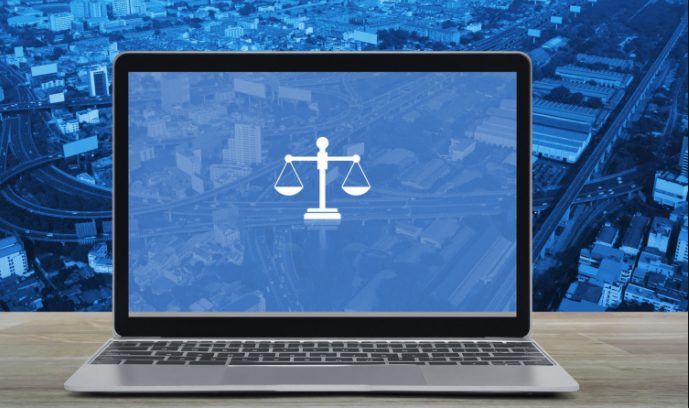
Virtual courts bring lawyers, litigants face to face with technology, its flaws

The pandemic has forced the judiciary to go virtual, but “inequitable access to technology and resources” has become a handicap for some lawyers and even litigants.
A reputed human rights organisation went to the extent of saying that a virtual courtroom “compromises” the rights of the accused.
For many, connectivity disruptions and technical glitches are turning the court proceedings into a judicial nightmare.
In this age of virtual judiciary, several lawyers struggle to find their moorings while there are many more who have either switched professions or are barely surviving.
“Many lawyers lack proper infrastructure at home and also do not have gadgets such as laptop or desktop, scanners and good WiFi connectivity to attend virtual hearings,” said Arindam Das, an advocate, who practices at the Calcutta high court.
“To properly argue the case by video conferencing, a lawyer may need to have a decent office set up at home with all the necessary gadgets. Not many can afford that though in popular perception a lawyer is inevitably a rich man who lives in a big house and rides expensive cars,” he added.
Civil society organisation ‘Daksh’ conducted a study titled: ‘Lawyers’ experiences during the COVID-19 pandemic’, in Madhya Pradesh, Karnataka and Delhi. The study raised the issue of equity.
It was because of its inherent flaws that virtual hearings did not trend until the pandemic forced the judiciary to embrace it.
In 2008, section 167(2) of the Criminal Procedure Code was amended to allow the use of video-conferencing for remand proceedings.
The most scathing criticism of the system came from a Calcutta high court judge, who had flagged the discrimination last week.
Also read: Promising the sun and the moon? It could be legally binding
“It is evident that since we have restricted hearings to virtual appearances and stopped altogether physical appearances before the high court, access to justice is being denied to most litigants and advocates coming from distant places and being technically and financially challenged,” observed Justice Sabyasachi Bhattacharyya.
“A coterie of members of the Bar and a limited few of the litigants are having an undue monopoly by running the virtual show, thereby depriving the common citizen access to justice before this court,” he added.
The judge himself had a first-hand experience of the vagary of the system.
Irritated by the frequent internet disruptions during the hearing of a case on July 16, Justice Bhattacharyya had directed the Central Project Coordinator to show-cause in writing as to why the proceedings should not be drawn up against the high court administration, including the Registrar General and the Central Project Coordinator, for criminal contempt of court due to continuous interference in virtual hearings.
Legal experts appreciated Justice Sabyasachi Bhattacharyya’s stand, but said that the issue raised by him was just one aspect of the problem.
“While High Courts and the Supreme Court have been able to transition to virtual hearings fairly easily, it has been difficult for the criminal trial courts of the country to do the same, owing to infrastructural inadequacies and the rigours of a trial process,” stated a Commonwealth Human Rights report titled: ‘Disconnected: Videoconferencing and Fair Trial.’
“There are also a number of implications that criminal proceedings conducted through video conferencing have on fair trial rights of litigants, especially for prisoners,” it said.
The report said its findings indicated that several fair trial rights are compromised when criminal proceedings take place through video conferencing.
The report was prepared based on interviews conducted with prison officers, lawyers and judicial officers.
As the accused are not physically produced before the court, it becomes difficult for the judge to identify signs of torture, coercion or intimidation by the police, the Commonwealth Human Rights report said.
Also read: Virtual courts to continue even after pandemic for ‘faster’ justice delivery
Further, the virtual hearing denies the accused the right to confidential communication with legal counsel, the report added.
The study conducted by ‘Daksh’ also observed that online hearings did not provide opportunities for lawyers to speak to incarcerated undertrial prisoners in private while maintaining attorney-client privilege.
“Physical hearings provided an opportunity for undertrials to meet their lawyers in court. In online hearings, the location of the defence lawyer in a different location from that of the defendant may prevent crucial consultation which otherwise takes place in a physical court,” the ‘Daksh’ report pointed out.
Loss of livelihood of many lawyers, particularly junior lawyers, after courts went digital, is another flipside of the virtual hearings.
“Many junior lawyers in particular have switched to alternative livelihood options such as driving Ola or Uber cabs,” advocate Das of Calcutta high court said.
Since lawyers are not permitted to practice any other profession and they are not permitted to earn a livelihood “by any other means,” the lawyers who have taken up other jobs are scared of making it public as it could lead to cancellation of their license to practice law.
“We are conscious of the fact that the advocates are bound by rules which restrict their income only to the profession. They are not permitted to earn a livelihood by any other means,” the Supreme Court had reiterated last year.

